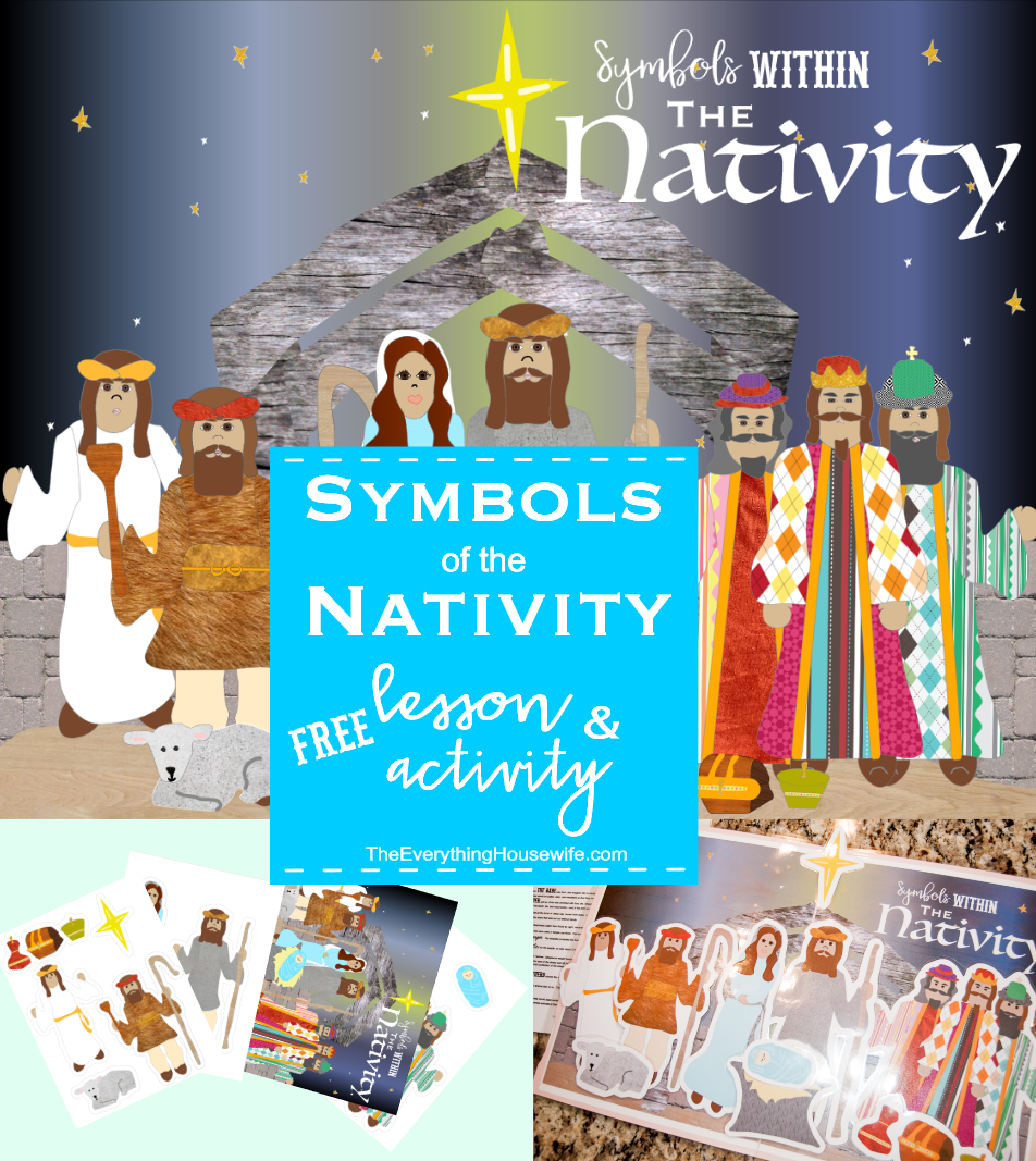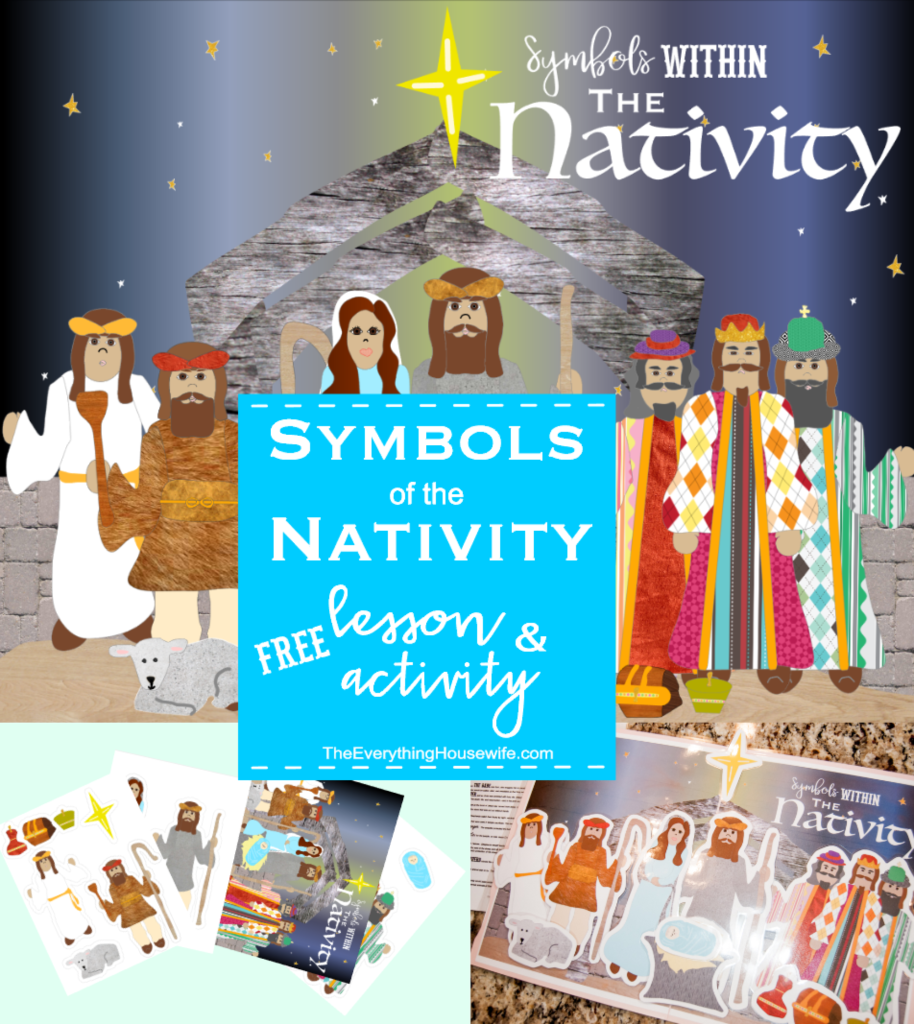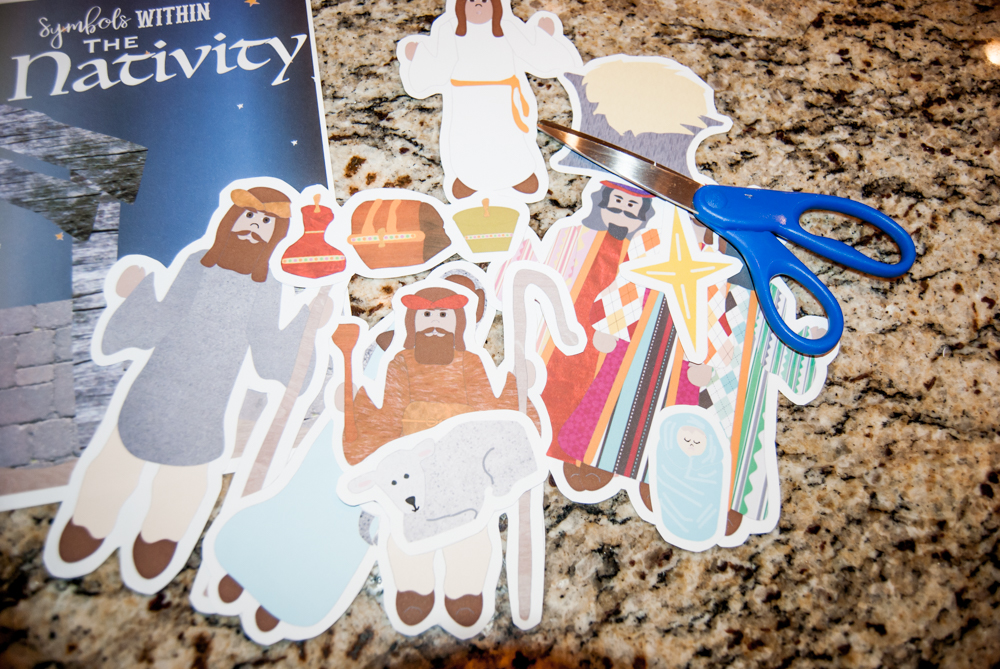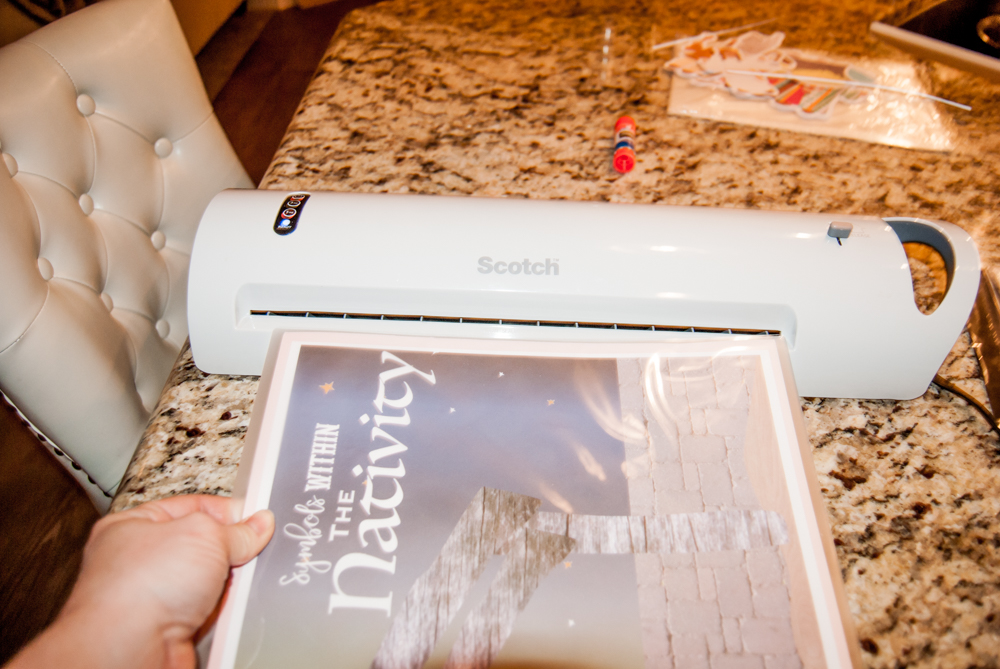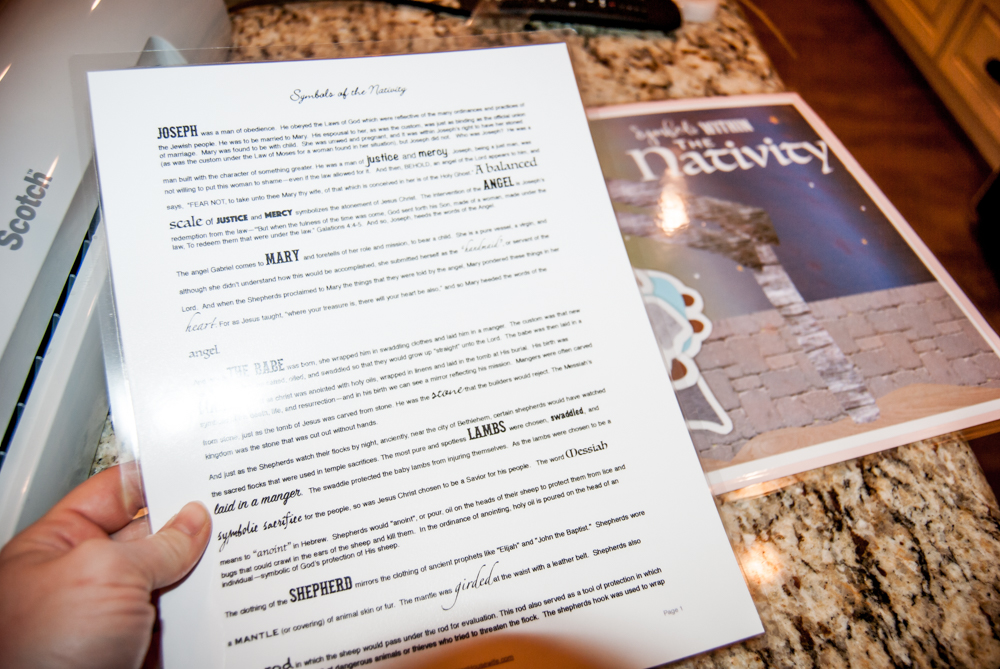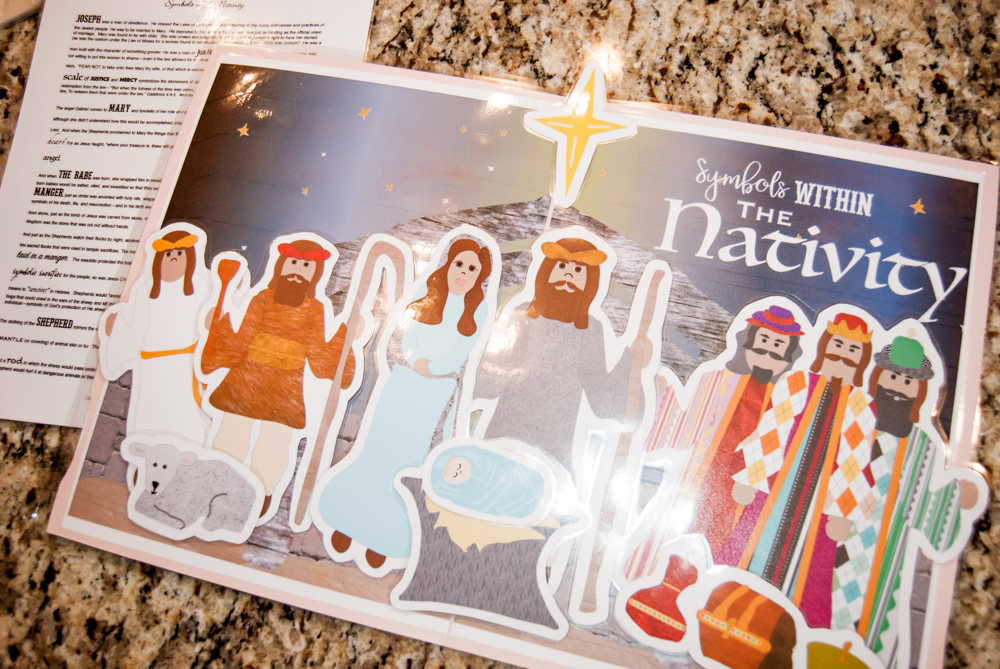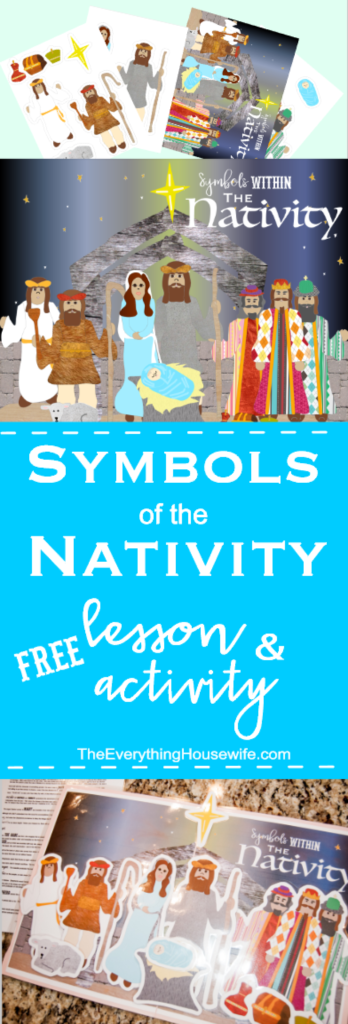FREE Symbols of the Nativity Sunday Lesson Activity
FREE Symbols of the Nativity Sunday Lesson Activity
What started out as a really great idea for a nursery lesson turned into something much for meaningful and impactful for me, and so I hope as you share this message with your loved ones, and people you teach, that you find the deeper meaning of Jesus Christ and His mission in the story of the Nativity. How does one convey the full of meaning of the symbolism of the nativity? The simple answer is that I can’t–there are no words that I can write to convey the sacredness and full meaning of this event! However, I hope that what I write offers new layers of meaning, and leads you on a path to greater understanding. In this post today, I share the gospel of Jesus Christ with you, using the “lens” of experiences that God has given me–the lens of a wife, and mother who loves the scriptures and symbols. I hope you can find meaning in your own life with what I have to share.
For Your Lesson
The lesson that you choose to teach can be found “within” this message on the nativity, and of course whatever you choose to add from scripture that you are moved to by the Holy Spirit. Take time to ponder it and pray about it for yourself. I realize that some of what I share in this post will be too intricate for a toddler, and yet, what I share will help you as a teacher, father, mother, parent or friend, to be able to teach this message more effectively to anyone of any age. And so, I have chosen to tell the story of the nativity, explaining the symbolism as I understand it, through scriptures, customs, and the holy spirit. The entire message of the gospel is one of LOVE and PEACE, because GOD IS LOVE, and the GOSPEL IS PEACE. This is the message I want to convey about the nativity, and I hope that you will be able to convey it to those you love too!
*I recommend that you print the PRINT THE PDF VERSION OF THE LESSON HERE. It will be higher quality, and I used beautiful fonts in bold. A copy and paste version of this message is at the bottom of my blog post, BUT it doesn’t have all the pretty fonts :-). So print the PDF version and enjoy its beauty!
Tips for your Project:
- Print your project on Cardstock, in high quality. I buy white card stock paper in bulk packages! I always end up going through it throughout the year. Here is card stock you can purchase on Amazon. Click Here
- I like to laminate my projects. Laminators are very affordable, and if you have small children, I think it’s a worthy investment. I have used mine more times than I can count. If you are going to purchase a laminator for projects like this, make sure that the slot you slide the paper into is at least 13 inches in length so that file folders can fit through for this project. This is the laminator I have, and it works great. (click here) I also use two different size laminating pouches, one for the printer sized pages, and on size for the file folders. These are bulk packages and have lasted me over two years. Click Here for smaller size, and Here. for file folder size.
- If you have a printer, great, but if you are in the market for a new printer. I highly recommend this one, for two reasons….The ink doesn’t dry out. My last printer i wasted tons of money on cartridges because I would print, and then wait a month before I would print again, and then the cartridge would dry out. So, I finally purchased this printer, and it was the best investment ever. You refill the ink wells with bottles, and I found bottles on amazon that were only $20….now I print like crazy, at super high quality, and I rarely have to refill the ink wells. Here is the printer I use, (click Here)…Worth Every Penny. I probably spent this much last year in dried out cartridges.
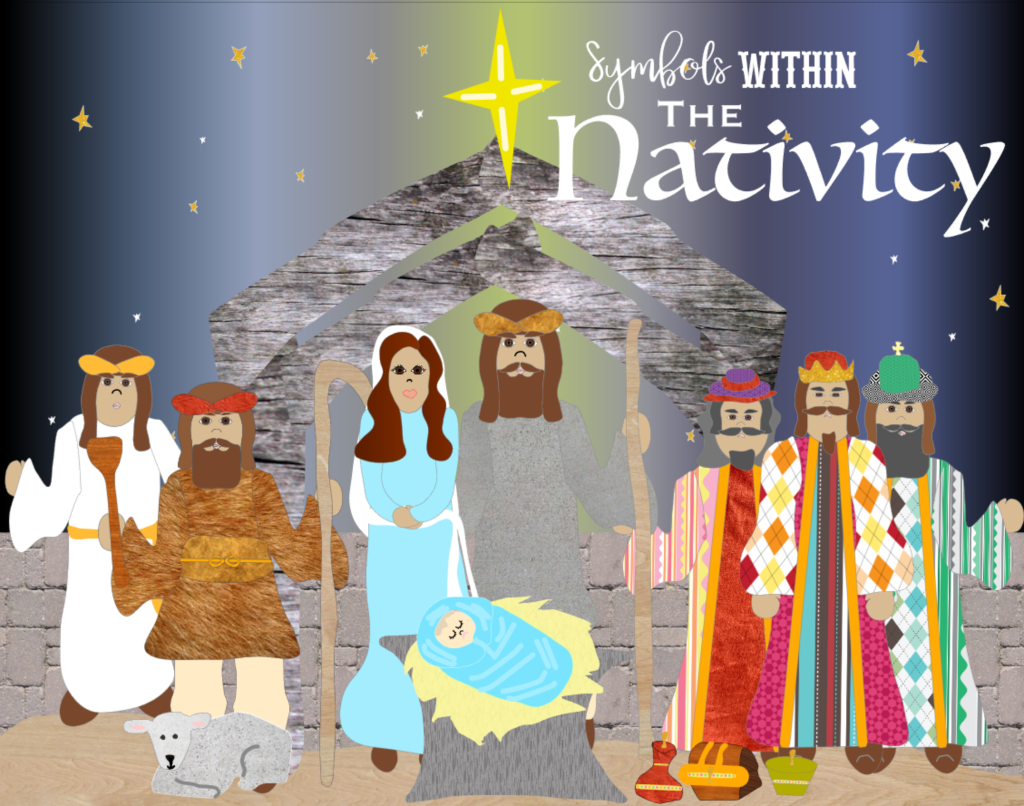
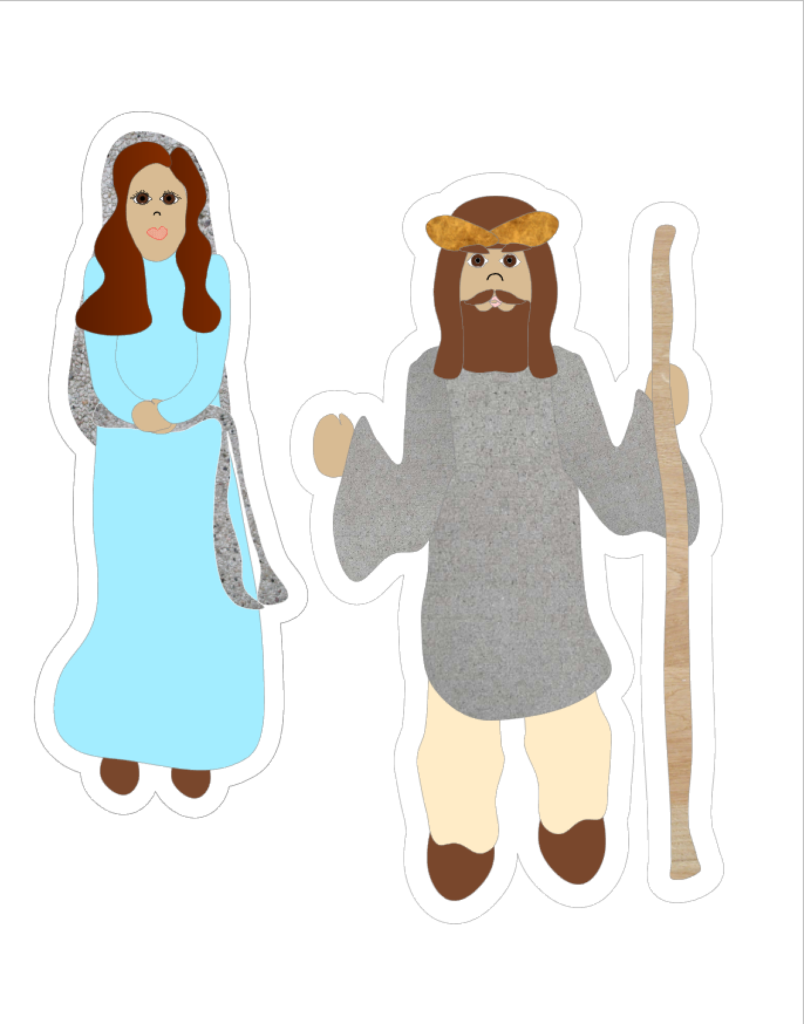
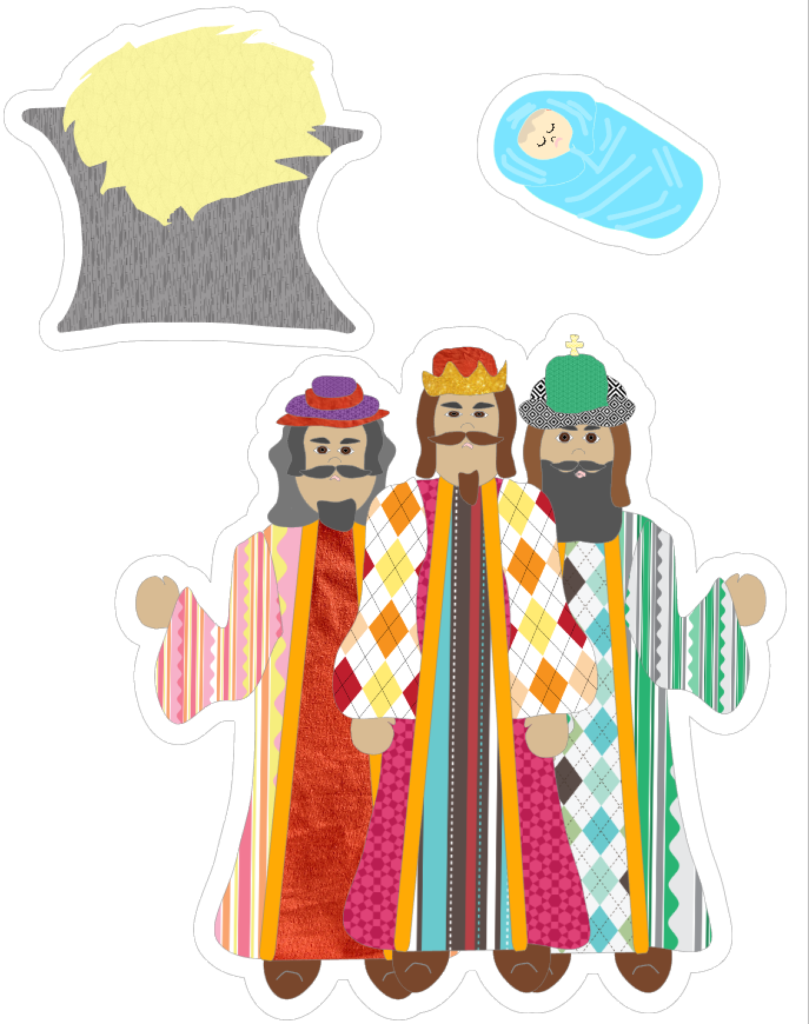


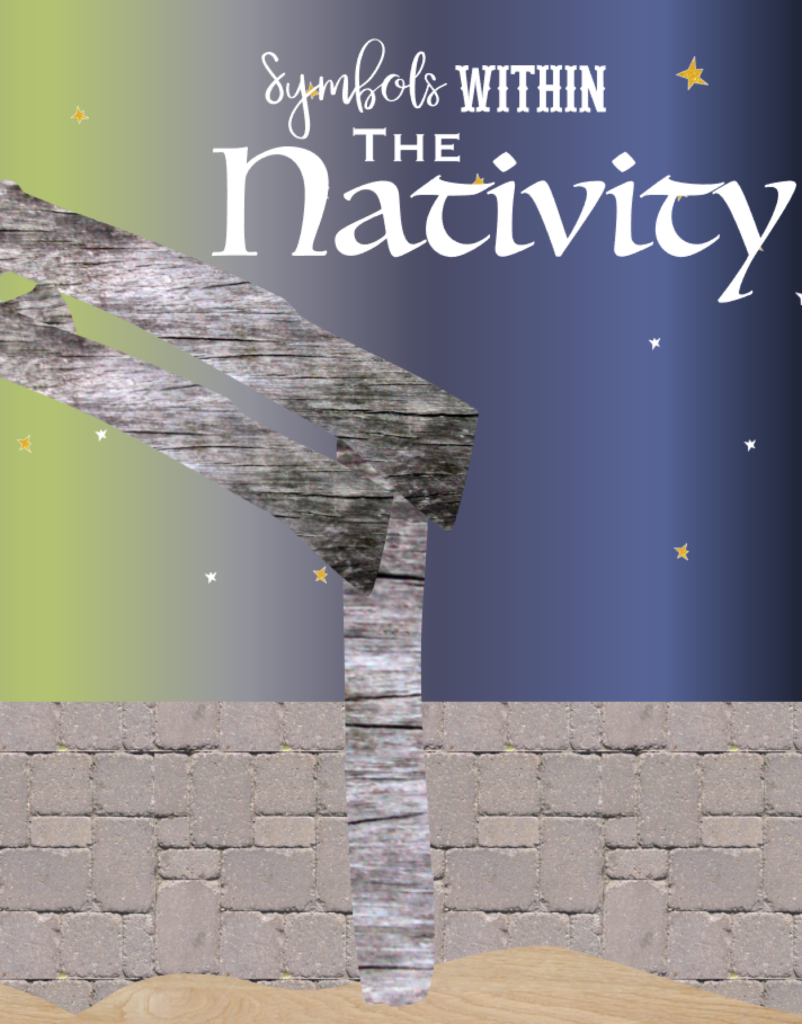

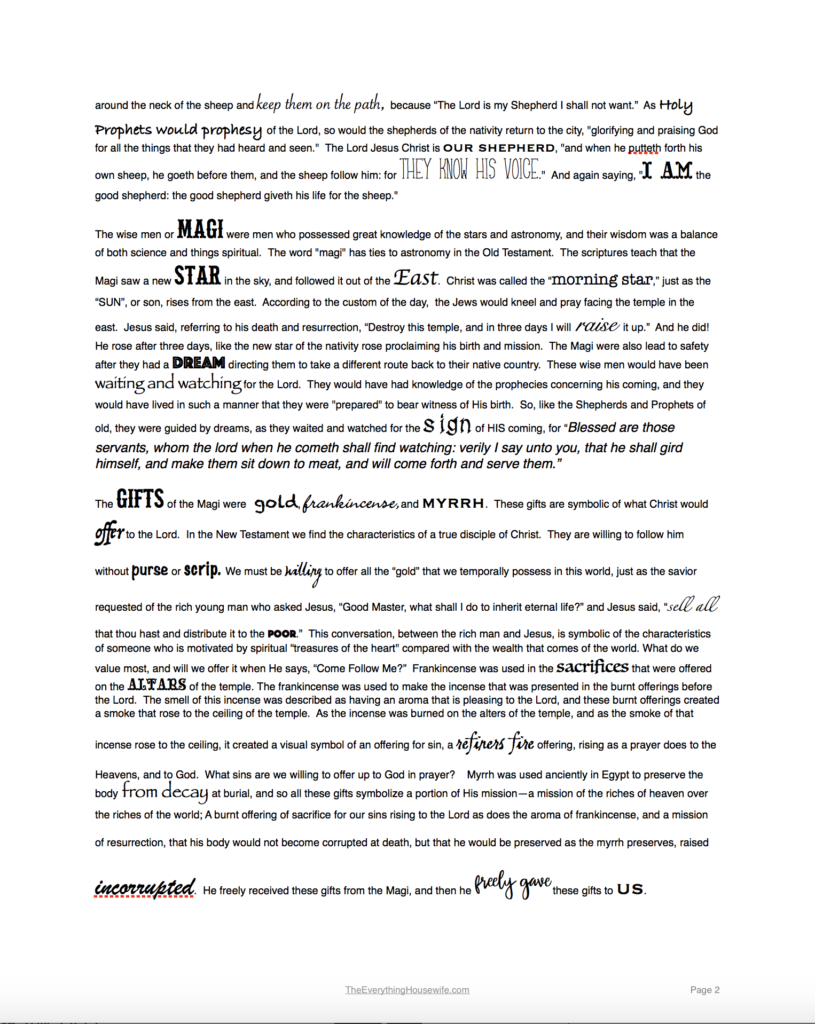
Epson Expression ET-2650 EcoTank
Scotch Thermal Laminating Pouches
Scotch Thermal Laminator
Joseph was a man of obedience. He obeyed the Laws of God which were reflective of the many ordinances and practices of the Jewish people. He was to be married to Mary. His espousal to her, as was the custom, was just as binding as the official union of marriage. Mary was found to be with child. She was unwed and pregnant, and It was within Joseph’s right to have her stoned (as was the custom under the Law of Moses for a woman found in her situation), but Joseph did not. Who was Joseph? He was a man built with the character of something greater. He was a man of justice and mercy. Joseph, being a just man, was not willing to put this woman to shame—even if the law allowed for it. And then, BEHOLD, an angel of the Lord appears to him, and says, “FEAR NOT, to take unto thee Mary thy wife, of that which is conceived in her is of the Holy Ghost.” A balanced scale of justice and mercy symbolizes the atonement of Jesus Christ. The intervention of the angel is Joseph’s redemption from the law—“But when the fulness of the time was come, God sent forth his Son, made of a woman, made under the law, To redeem them that were under the law.” Galations 4:4-5. And so, Joseph, heeds the words of the Angel.The angel Gabriel comes to Mary and foretells of her role and mission, to bear a child. She is a pure vessel, a virgin, and although she didn’t understand how this would be accomplished, she submitted herself as the “handmaid”, or servant of the Lord. And when the Shepherds proclaimed to Mary the things that they were told by the angel, Mary pondered these things in her heart. For as Jesus taught, “where your treasure is, there will your heart be also,” and so Mary heeded the words of the angel.
And when THE BABE was born, she wrapped him in swaddling clothes and laid him in a manger. The custom was that new born babies would be salted, oiled, and swaddled so that they would grow up “straight” unto the Lord. The babe was then laid in a manger, just as christ was anointed with holy oils, wrapped in linens and laid in the tomb at His burial. His birth was symbolic of his death, life, and resurrection—and in his birth we can see a mirror reflecting his mission. Mangers were often carved from stone, just as the tomb of Jesus was carved from stone. He was the stone that the builders would reject. The Messiah’s kingdom was the stone that was cut out without hands.
And just as the Shepherds watch their flocks by night, anciently, near the city of Bethlehem, certain shepherds would have watched the sacred flocks that were used in temple sacrifices. The most pure and spotless lambs were chosen, swaddled, and laid in a manger. The swaddle protected the baby lambs from injuring themselves. As the lambs were chosen to be a symbolic sacrifice for the people, so was Jesus Christ chosen to be a Savior for his people. The word Messiah means to “anoint” in Hebrew. Shepherds would “anoint”, or pour, oil on the heads of their sheep to protect them from lice and bugs that could crawl in the ears of the sheep and kill them. In the ordinance of anointing, holy oil is poured on the head of an individual—symbolic of God’s protection of His sheep.
The clothing of the shepherd mirrors the clothing of ancient prophets like “Elijah” and “John the Baptist.” Shepherds wore a mantle (or covering) of animal skin or fur. The mantle was girded at the waist with a leather belt. Shepherds also carried a rod in which the sheep would pass under the rod for evaluation. This rod also served as a tool of protection in which the shepherd would hurl it at dangerous animals or thieves who tried to threaten the flock. The shepherds hook was used to wrap around the neck of the sheep and keep them on the path, because “The Lord is my Shepherd I shall not want.” As Holy Prophets would prophesy of the Lord, so would the shepherds of the nativity return to the city, “glorifying and praising God for all the things that they had heard and seen.” The Lord Jesus Christ is our shepherd, “and when he putteth forth his own sheep, he goeth before them, and the sheep follow him: for they know his voice.” And again saying, “I am the good shepherd: the good shepherd giveth his life for the sheep.”
The wise men or Magi were men who possessed great knowledge of the stars and astronomy, and their wisdom was a balance of both science and things spiritual. The word “magi” has ties to astronomy in the Old Testament. The scriptures teach that the Magi saw a new star in the sky, and followed it out of the East. Christ was called the “morning star,” just as the “SUN”, or son, rises from the east. According to the custom of the day, the Jews would kneel and pray facing the temple in the east. Jesus said, referring to his death and resurrection, “Destroy this temple, and in three days I will raise it up.” And he did! He rose after three days, like the new star of the nativity rose proclaiming his birth and mission. The Magi were also lead to safety after they had a dream directing them to take a different route back to their native country. These wise men would have been waiting and watching for the Lord. They would have had knowledge of the prophecies concerning his coming, and they would have lived in such a manner that they were “prepared” to bear witness of His birth. So, like the Shepherds and Prophets of old, they were guided by dreams, as they waited and watched for the sign of HIS coming, for “Blessed are those servants, whom the lord when he cometh shall find watching: verily I say unto you, that he shall gird himself, and make them sit down to meat, and will come forth and serve them.”
The gifts of the Magi were gold, frankincense, and myrrh. These gifts are symbolic of what Christ would offer to the Lord. In the New Testament we find the characteristics of a true disciple of Christ. They are willing to follow him without purse or scrip. We must be willing to offer all the “gold” that we temporally possess in this world, just as the savior requested of the rich young man who asked Jesus, “Good Master, what shall I do to inherit eternal life?” and Jesus said, “sell all that thou hast and distribute it to the poor.” This conversation, between the rich man and Jesus, is symbolic of the characteristics of someone who is motivated by spiritual “treasures of the heart” compared with the wealth that comes of the world. What do we value most, and will we offer it when He says, “Come Follow Me?” Frankincense was used in the sacrifices that were offered on the altars of the temple. The frankincense was used to make the incense that was presented in the burnt offerings before the Lord. The smell of this incense was described as having an aroma that is pleasing to the Lord, and these burnt offerings created a smoke that rose to the ceiling of the temple. As the incense was burned on the alters of the temple, and as the smoke of that incense rose to the ceiling, it created a visual symbol of an offering for sin, a refiners fire offering, rising as a prayer does to the Heavens, and to God. What sins are we willing to offer up to God in prayer? Myrrh was used anciently in Egypt to preserve the body from decay at burial, and so all these gifts symbolize a portion of His mission—a mission of the riches of heaven over the riches of the world; A burnt offering of sacrifice for our sins rising to the Lord as does the aroma of frankincense, and a mission of resurrection, that his body would not become corrupted at death, but that he would be preserved as the myrrh preserves, raised incorrupted. He freely received these gifts from the Magi, and then he freely gave these gifts to us
